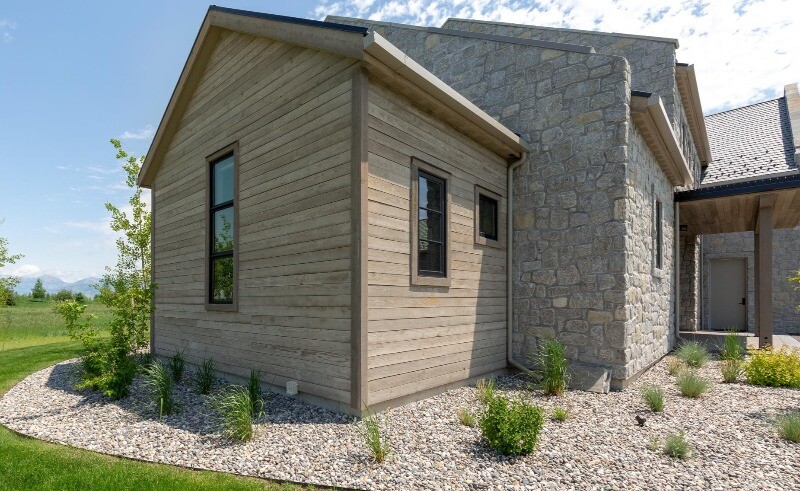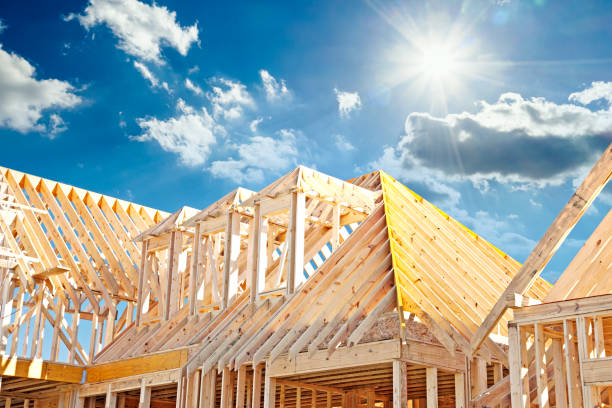
Emerging Trends in Sustainable Siding
Wednesday October 23rd 2024
By Aaron Smith - President, Tarheel Trusted Home Builders
Sustainable house siding materials, such as recycled metal, fiber cement, sustainably harvested wood, and natural stone, offer eco-friendly alternatives to traditional options by reducing environmental impact, enhancing energy efficiency, and requiring minimal maintenance.
These materials not only last longer but also promote responsible resource use, often incorporating recycled or renewable content. Choosing sustainable siding is a smart way to lower your home’s ecological footprint while ensuring durability and aesthetic appeal.
Read More
When constructing a new home, one of the most important decisions homeowners face is selecting the appropriate siding material. Not only does it impact the home’s aesthetic, but it also plays a key role in energy efficiency, durability, and environmental footprint. With growing concerns about sustainability, more homeowners are opting for eco-friendly materials that are not only durable but also have a lower environmental impact over their life cycle. Sustainable siding materials are a smart choice for those looking to build greener homes, reducing both energy consumption and long-term maintenance costs.
Recycled Metal Siding is one such sustainable option. Metal, particularly steel and aluminum, is often made from recycled content, reducing the need for virgin material extraction, which is energy-intensive. Metal siding is also extremely durable, capable of withstanding extreme weather conditions, and resistant to pests and fire. While the upfront cost may be higher than traditional options like vinyl, its longevity and minimal maintenance requirements make it an eco-friendly choice over time. Additionally, at the end of its life, metal siding can be fully recycled again, contributing to a circular economy.
Wood Siding is another popular option, particularly when sourced from sustainably managed forests. Wood is a renewable resource and can be treated with non-toxic finishes to increase its durability. Cedar, pine, and redwood are common choices for sustainable wood siding. However, it is essential to ensure that the wood carries certifications like the Forest Stewardship Council (FSC) seal, indicating it was harvested responsibly. Wood has excellent insulation properties, but it requires regular maintenance to prevent rot, pests, or damage from weather exposure. It can also be recycled or repurposed at the end of its life, reducing waste.
Fiber Cement Siding combines sustainability with durability. Made from a mixture of cement, sand, and cellulose fibers, it mimics the appearance of wood while being resistant to fire, pests, and weather. While the production of cement has a high carbon footprint, fiber cement siding is often lauded for its long lifespan and minimal maintenance needs, making it a more sustainable choice over time. Companies that focus on reducing carbon emissions during production, or that use recycled materials in the mixture, offer even more eco-friendly versions of fiber cement siding.
Reclaimed Wood or Recycled Materials can also be used for siding, giving a home a unique, rustic appearance while repurposing materials that would otherwise go to waste. Reclaimed barn wood, for instance, is a beautiful and sustainable option. Using reclaimed or recycled materials minimizes the need for new resource extraction and manufacturing. This approach not only conserves raw materials but also reduces landfill waste and energy consumption associated with processing new materials.
Lastly, Natural Stone Siding is a highly sustainable choice due to its durability and minimal maintenance. Although the extraction process can be energy-intensive, stone siding can last for centuries without needing replacement, making its environmental impact over the long term relatively low. Stone is also an excellent insulator, helping to maintain interior temperatures and reduce energy consumption. When locally sourced, it cuts down on transportation emissions, further contributing to its sustainability.
In summary, when choosing sustainable siding materials, it’s essential to consider not just the environmental impact of the material's production, but also its longevity, recyclability, and energy efficiency. Whether you opt for recycled metal, sustainably harvested wood, fiber cement, or natural stone, each option offers a way to reduce your home’s ecological footprint while maintaining aesthetic appeal and durability.
The Advantages of Building a New Home.
Tuesday October 22rd 2024
By Aaron Smith - President, Tarheel Trusted Home Builders
Building a new home offers significant advantages over buying a used one, including full customization, modern energy efficiency, and lower maintenance costs. New homes are built with the latest construction techniques, eco-friendly materials, and future-ready technology, providing long-term value and comfort. Additionally, homeowners can choose ideal locations and enjoy peace of mind with warranties, making new builds a better investment overall.
Read More
Building a new home offers several advantages over purchasing an existing, or used, home, making it an appealing option for many homeowners. While the decision may depend on personal preferences, budget, and location, building new often provides more long-term benefits in terms of customization, energy efficiency, and lower maintenance costs. Whether you're seeking a dream home tailored to your exact needs or looking to maximize your investment over time, the advantages of constructing a new house can far outweigh the limitations of buying an older, pre-existing property.
One of the primary benefits of building a new home is the ability to customize nearly every detail. From floor plans and room layouts to finishes, fixtures, and exterior design, you have complete control over the aesthetics and functionality of your living space. This personalization allows homeowners to design a home that fits their lifestyle, incorporating modern features like open-concept living spaces, energy-efficient windows, smart home technology, and even special-purpose rooms such as home offices or gyms. In contrast, buying a used home often means compromising on certain features or embarking on costly renovations to meet your personal tastes.
Another significant advantage of new homes is their energy efficiency. Modern building codes and technologies require homes to be constructed with energy-saving materials and features, such as better insulation, high-efficiency HVAC systems, and energy-efficient appliances. This can result in lower utility bills and a smaller environmental footprint. Older homes, unless they have been recently updated, may have outdated systems, leaky windows, or insufficient insulation, leading to higher energy costs and a less comfortable living environment.
In terms of maintenance and repairs, new homes offer peace of mind compared to used homes, which may come with hidden issues such as aging roofs, outdated plumbing, or structural problems. Building a new home means everything is brand new and under warranty, reducing the likelihood of major repairs in the first several years. This translates to lower maintenance costs and fewer unexpected expenses, allowing homeowners to focus on enjoying their space without worrying about sudden repairs or renovations. Older homes may require immediate or ongoing maintenance to bring them up to modern standards.
New homes are also built with the latest construction techniques and materials, which often include more sustainable and environmentally friendly options. This not only helps reduce the impact on the environment but can also increase the resale value of the home, as more buyers look for eco-friendly features. Additionally, new homes are built with future technology in mind, incorporating smart home systems, wiring for modern electronics, and infrastructure for solar power, electric vehicles, and other forward-thinking amenities.
Lastly, building a new home often involves selecting a location that suits your needs, whether that’s a new development with modern infrastructure, access to good schools, or proximity to parks and recreational areas. While buying a used home can limit your options to the available properties in a given area, building new allows you to choose the perfect location, giving you more control over your neighborhood and surroundings. Additionally, new developments may offer community amenities such as pools, playgrounds, and walking paths, enhancing your overall quality of life.
In conclusion, building a new home offers a range of benefits, from complete customization and energy efficiency to reduced maintenance and the opportunity to select an ideal location. While buying a used home can sometimes be faster or more cost-effective upfront, the long-term advantages of building new often make it a better investment in terms of both financial value and lifestyle satisfaction. For those who want a home tailored to their exact needs and built to modern standards, constructing a new home is the clear winner.
